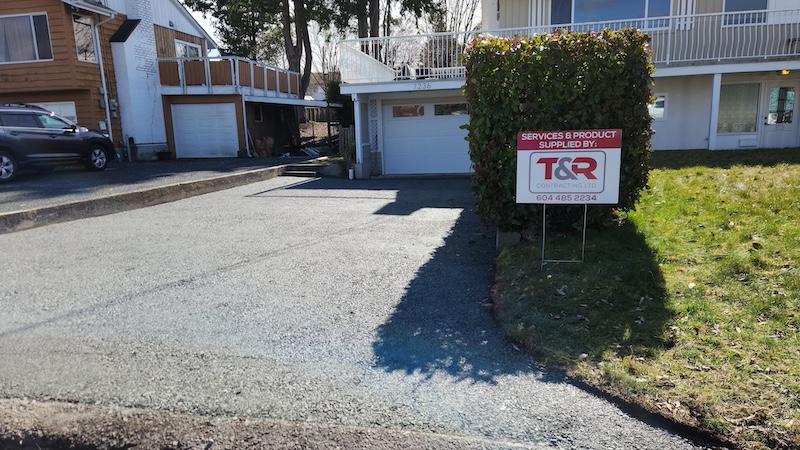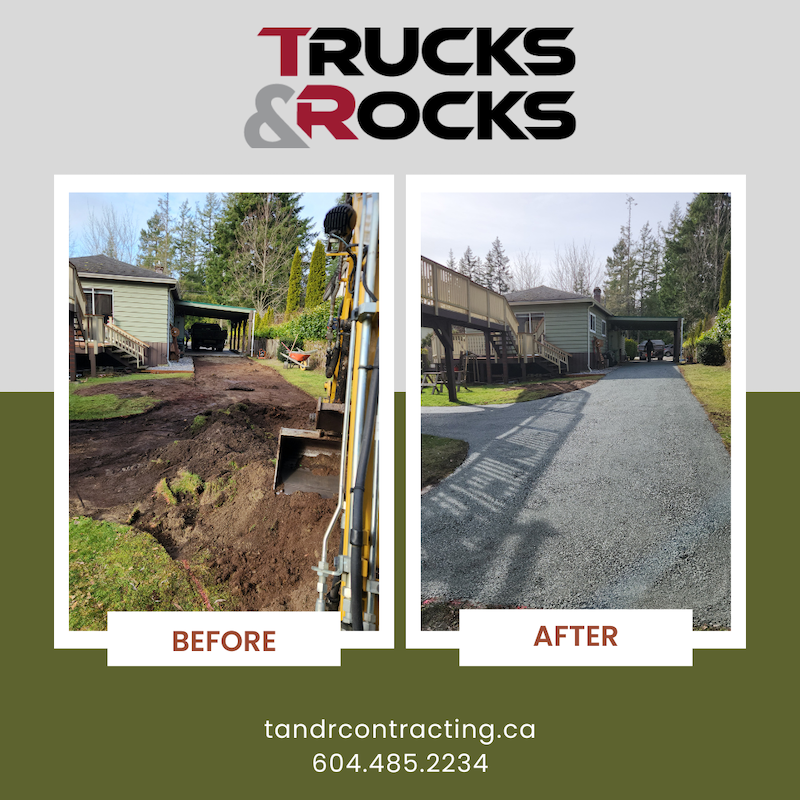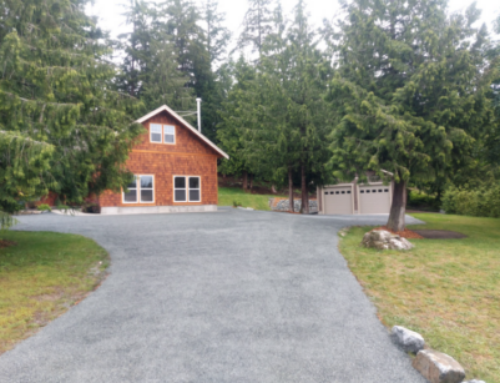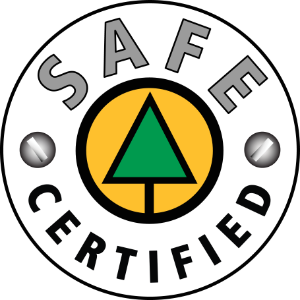Driveway replacement

When considering the repair or replacement of a driveway, there are several key factors to keep in mind to ensure you make the best decision for your home and budget. If budget is a key consideration, we do recommend a gravel driveway. One of the key reasons is that when care is taken on the shaping, drainage, and compaction, a gravel driveway replacement can help mitigate damage from both water and fire.
Here are the top 10 things to consider for driveway replacement
Material options
The most common driveway materials include asphalt, concrete, gravel, and pavers. Each has its advantages and disadvantages in terms of cost, durability, maintenance, and aesthetics.
Cost
Evaluate the total cost of both repair and replacement, including materials and labor. Make sure to get several quotes from different contractors to compare prices.
Condition of existing driveway
Assess the current condition of your driveway. Small cracks or holes can often be repaired, but larger issues may require a full replacement.
Width of existing or new driveway
Another thing to consider is the width of your driveway. Gravel driveways should be at least 8 feet wide for a single driveway. But if you want a two-lane driveway, or one that will accommodate bigger vehicles or equipment 20 feet is the best. Some materials can get very pricey when thinking of a larger footprint.
Longevity and durability
Consider how long the new driveway materials will last be compared to the cost. Some materials are more durable and have a longer lifespan.
Climate
The local climate plays a significant role in determining the best material for your driveway. For instance, asphalt might be better in colder climates due to its flexibility under freezing conditions, while concrete might be preferable in warmer areas. The challenge with both surfaces is that they do not absorb water. Powell River has a mean annual precipitation is 1200 mm (47 in), and ranges from 1,000 to 4,400 mm (39.4 to 173.2 in). Gravel driveways are great when considering water mitigation.
Maintenance requirements
Some materials require more maintenance than others. For example, asphalt driveways need to be sealed every few years, whereas concrete driveways require less frequent maintenance. Gravel driveways need maintenance after the winter, but it is relatively low cost to keep it in tip top shape.
Aesthetic and design options
The appearance of your driveway contributes to your home’s curb appeal. Consider the aesthetic qualities of the driveway materials and any design options such as color, texture, or pattern. Some may say that gravel driveways and are not very pleasing, but you can add to the look by lining it with paving stones or landscape features.
Permits and regulations
Check local building codes and homeowners’ association rules to ensure compliance with regulations regarding driveway materials, design, and construction.
Environmental impact
Consider the environmental implications of different materials. For example, permeable pavers offer better drainage and can reduce runoff, which might be important in areas prone to heavy rain.
“Using loose materials such as gravel stones is one of the most cost effective ways to pave your driveway. Simply add brick stones on both sides to make it look classy, just like the example photo above. However, if you are not fond of brick stones, you can replace them with planters or concrete.”
Kyle Robert, GM T&R Contracting
Benefits of a gravel driveway
- Choices include crushed shale, granite, limestone and concrete, along with gravel in various sizes and colours.
- Both stone and gravel are economical, and both offer good freeze/thaw resistance. No base is needed—simply pour and spread. Additionally, when stone or gravel becomes compacted or dispersed, easily topping it up with a layer of pea gravel, a process known as redressing, can be done.
- Crushed stone and gravel costs around $0.25 cents per square foot at a depth of 2 inches.
Gravel driveway maintenance
As with any surface, attention to maintenance is key. For gravel driveways, stone and gravel will develop ruts over time. Also, smaller stones, or fines, tend to sink after four or five years, leaving larger stones on top. Periodic redressing is a necessity. When a fill coat of material is necessary to fill in ruts, be sure to redress the entire driveway with the original size/type of aggregate for consistency since stone size and color can vary depending on the source. For new gravel driveways, use 3/4-minus stone for stability. Depth required ranges from 1 1/2 in. for stable soil to 6 to 8 in. for unstable soil. It is also a good idea to use landscape fabric to minimize weed growth.
Resurfacing is ideal for driveways that are showing signs of aging or have light to moderate damage on more than 25% of their surface. By resurfacing the entire driveway, it will appear as good as new. However, if your driveway has substantial potholes or numerous cracks that are wider than 1/4-inch, replacing the entire driveway may be necessary. Call T&R today to help determine if a repair or a replacement is necessary.

Resources




